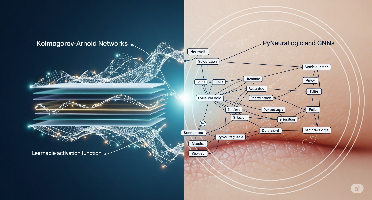
gigahidjrikaaa
Project OwnerLeads AI/ML development & data engineering. Implements KAN & PyNeuraLogic modules, system integration, & MeTTa POC. Manages project execution. Final-year Info. Eng. student focused on AI.
DEEP Connects Bold Ideas to Real World Change and build a better future together.
Coming Soon
The project addresses critical gaps in melanoma diagnosis by creating an explainable & equitable neural-symbolic system. We leverage KANs for interpretable feature extraction from dermoscopic images, ensuring fairness across diverse skin tones. PyNeuraLogic will integrate this with explicit clinical knowledge (e.g., ABCD-E rules, patient history via GNNs/SNOMED CT) for robust, higher-order reasoning. An optional AIRIS-inspired experiential learning module can further refine rules. Our goal is to significantly improve diagnostic accuracy, transparency, and equity, with a Proof of Concept developed in MeTTa, directly aligning with the RFP's focus on neural-symbolic DNNs for advanced reasoning.
This RFP invites proposals to explore and demonstrate the use of neural-symbolic deep neural networks (DNNs), such as PyNeuraLogic and Kolmogorov Arnold Networks (KANs), for experiential learning and/or higher-order reasoning. The goal is to investigate how these architectures can embed logic rules derived from experiential systems like AIRIS or user-supplied higher-order logic, and apply them to improve reasoning in graph neural networks (GNNs), LLMs, or other DNNs. Bids are expected to range from $40,000 - $100,000.
This initial 6-week milestone establishes the project's foundation. Activities include: intensive literature review (KANs, PyNeuraLogic, NeSy in dermatology, AI fairness); finalization of the detailed KAN-PyNeuraLogic system architecture, including data flows and model specifications; definition of the data acquisition and preprocessing strategy for diverse datasets (e.g., ISIC, HAM10000, Fitzpatrick17k) with a focus on bias mitigation. Python (PyTorch for KANs/PyNeuraLogic) and MeTTa development environments will be configured. A comprehensive agile project plan (tasks, timeline, risks) and a MeTTa POC integration strategy will be developed. Onboarding of any specialized AI personnel will be finalized. Ethical data handling and model evaluation protocols will be documented.
Research Plan & System Architecture Document: Comprehensive document detailing literature review summary; finalized KAN-PyNeuraLogic-GNN system architecture (including SNOMED CT strategy and data flows); component design specifications; equity/fairness strategy; and MeTTa POC conceptual design. Data Management Plan: Document outlining selected datasets, robust preprocessing steps, any data augmentation techniques, and ethical data handling protocols. Agile Project Execution Plan: Detailed breakdown of tasks, assigned team responsibilities, a full project timeline with risk management strategies. Development Environment Report: Brief confirmation of successfully configured software, libraries, and access to necessary computational resources.
$19,000 USD
Internal approval (and DeepFunding acknowledgement, if applicable) of the Research Plan & System Architecture Document, confirming its technical soundness, completeness, and alignment with RFP goals. Completion and internal approval of the Data Management Plan, ensuring it thoroughly addresses data diversity, potential biases, and ethical standards. Internal acceptance of the Agile Project Execution Plan, demonstrating a clear and actionable roadmap with defined tasks, roles, and timelines for project completion. Demonstration of functional and configured Python (for KANs/PyNeuraLogic) and MeTTa development environments, ready for subsequent model development. Successful initiation or completion of the onboarding process for any additional specialized AI personnel, if planned and funded by the grant within this phase.
Spanning approximately 10 weeks after Milestone 1, this phase focuses on developing and initially testing the core neural-symbolic components. This includes: Developing the KAN-based module for dermoscopic image analysis: implementing the KAN architecture, training on diverse datasets (equity focus), creating methods to visualize learned functions for interpretability, and conducting initial fairness metric evaluations. Developing the PyNeuraLogic module for symbolic reasoning: encoding clinical guidelines (e.g., ABCD-E) as differentiable rules, implementing the GNN for structured patient data, integrating SNOMED CT concepts, and training/validating this module. Performing the initial integration of KAN module outputs (interpretable features/classifications) as inputs to the PyNeuraLogic module. Conducting preliminary testing of individual components against benchmarks or baselines, and iterative model refinement based on results and dermatologist MD feedback. Drafting initial sections of the RFP-required comprehensive survey and architectural comparison report.
Developed KAN-based Image Analysis Module: Includes working codebase (Python/PyTorch), scripts for training/validation and feature/activation visualization, and an initial report on performance and fairness metrics across subgroups. Developed PyNeuraLogic Symbolic Reasoning Module: Includes working codebase with embedded rules and GNN, scripts for SNOMED CT integration, and an initial report on reasoning task performance. Early Integrated System Prototype: A basic functional prototype demonstrating data flow from the KAN module to the PyNeuraLogic module, capable of processing a small set of diverse test cases. Preliminary Test Results Report: Summarizes individual component testing, initial integration tests, performance against any baselines, and early findings on interpretability and fairness. Draft Survey & Architectural Comparison Document: Initial draft of the survey evaluating neural-symbolic architectures and a comparison informed by early development insights, as per RFP expectations.
$38,000 USD
Successful demonstration of the KAN module processing dermoscopic images, generating features, and providing initial interpretable outputs, with documented performance and fairness metrics. Successful demonstration of the PyNeuraLogic module applying symbolic rules, reasoning over GNN-integrated patient data, and incorporating SNOMED CT concepts, with documented performance. The early integrated system prototype successfully processes a minimum of 10 diverse test cases end-to-end, from image input to reasoned symbolic output. The Preliminary Test Results Report is completed, reviewed by the full team (including MD and potential Professor), and shows tangible progress in implementing core RFP concepts. The Draft Survey & Architectural Comparison document is submitted, showing substantial progress toward fulfilling this key RFP expected outcome.
This final 8-week milestone (approx.) focuses on developing the MeTTa Proof of Concept (POC), conducting a comprehensive system evaluation, and finalizing all project deliverables. Key activities: Develop the MeTTa POC: Create MeTTa representations for the neural-symbolic system's inputs and outputs; implement MeTTa logic/atoms to interface with or represent the KAN/PyNeuraLogic modules; demonstrate end-to-end reasoning within MeTTa. Conduct comprehensive system-level evaluation: Assess diagnostic accuracy on diverse test datasets; verify robustness of fairness metrics across skin tones/demographics; evaluate quality/utility of XAI explanations (with MD feedback); analyze small-data learning performance; demonstrate effective bridging of data-driven/symbolic reasoning. (If pursued) Finalize development, integration, and evaluation of the optional AIRIS-inspired rule refinement module. Finalize all project documentation: comprehensive survey, architectural report, user/developer guides, and the final project report. Prepare and package the open-source code release (e.g., on GitHub, under MIT license). Prepare dissemination materials (e.g., draft research paper, presentation).
Functional MeTTa Proof of Concept (POC): Includes MeTTa codebase, a demonstration of the POC processing sample cases and generating explainable diagnostic insights, and documentation for the MeTTa POC architecture and usage. Comprehensive System Evaluation Report: Detailed report on the fully integrated system's performance, covering accuracy, fairness (with statistical analysis across subgroups), explainability (with examples), small-data learning capabilities, and overall system dynamics. Final Project Report: Consolidated report summarizing the project (objectives, methods, results, discussion, conclusions, future work), incorporating the finalized "Comprehensive Survey and Evaluation" and "Architectural Comparisons" as per RFP. Open-Source Code Package: Well-documented source code for all developed components (KAN, PyNeuraLogic, MeTTa POC) released on a public repository like GitHub under the chosen open-source license. Framework Demonstration Materials: Slides, a recorded demo of the MeTTa POC, or other materials suitable for showcasing project outcomes. Documentation Package: Complete user guides, developer documentation, and setup instructions for the codebase.
$38,000 USD
The MeTTa POC is fully functional and successfully demonstrates end-to-end processing of representative melanoma cases, providing verifiable explainable outputs, confirmed by the project team and ideally through a demo to DeepFunding/SingularityNET representatives. The Comprehensive System Evaluation Report is completed, approved by the project team, and clearly substantiates all claims regarding accuracy, fairness, explainability, and other RFP-stipulated performance metrics. The Final Project Report and all associated documentation (survey, comparisons, user/developer guides) are completed to a high professional standard, providing a full account of the project and its findings. The full project codebase is publicly released via a platform like GitHub under the specified open-source license, with adequate documentation for community understanding and potential use. All deliverables committed to in the grant proposal are submitted and meet or exceed established quality expectations. The project team, including the consulting MD, confirms that the developed system's explainability and fairness approaches represent a meaningful and innovative step forward for AI in dermatology.
Reviews & Ratings
Please create account or login to write a review and rate.
Check back later by refreshing the page.
© 2025 Deep Funding
Join the Discussion (0)
Please create account or login to post comments.